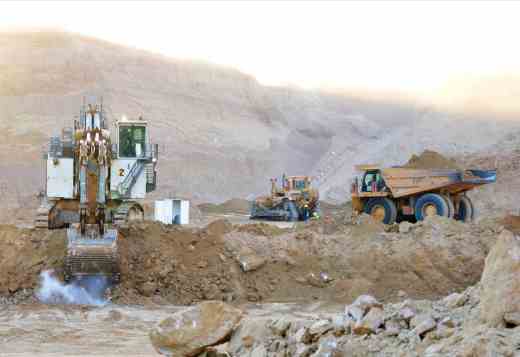|
|
Miner Miscommunication: A Lack of Clarity
Why do diamond producers seem to have trouble speaking in terms the average person can understand?
Nov 21, 2018 9:21 AM
By Joshua Freedman
|
|
|

RAPAPORT...
A bizarre press release from Alrosa landed in the Rapaport
News inbox in early October, purporting to relay positive results from the
“washing season of 2018” at one of its subsidiaries. What exactly occurs during
the Almazy Anabara washing season, which “lasted from the twenties of May to the
24th of September”? That much was a mystery. Since the text seemed to be about
mining and production, we presumed Alrosa was describing something more
critical to its business than how well its cleaners had mopped the floors, or
whether the Russian executives’ shirts had dried efficiently in the summer sun.
So we carried on reading.
“Such results were achieved due to, without limitation, the
advanced diamond-bearing sand processing technology,” clarified Pavel
Marinychev, CEO of Almazy Anabara, in the next sentence. “In particular, we
have upgraded the X-ray luminescent separation line to decrease workload of
dense-media separation units at the Bolshaya Kuonamka deposit and to increase
capacity of grading units.”
At this point, the only thing clear to us was that we didn’t
understand what this news item was trying to say, and neither would our
readers. So we decided not to cover it. Alrosa’s subsequent mention of
expansions to “tank parks of fuel and lubricant materials” only left us more
baffled, and even less likely to run the story.
The quest for plain language
This is a common problem in the diamond industry, especially
among miners — and not just those like Alrosa, where English is a second
language. When journalists receive an unclear press release, they either
republish it without a thought — which is bad practice and unhelpful for the
reader — or disregard it altogether.
We can guess why this kind of opaqueness happens. Many
people are involved in producing corporate communications for a company, and
they all have interests and preferences. The media teams — who just want good
press coverage — find themselves bowing to the technical staff who can’t bear
to see their “load haul dumpers” described merely as “trucks.”
“People along the way — those technical people, financial
experts — aren’t trained in plain-language techniques, and they’re not really
trained in how to communicate to the average consumer,” says Jeff Greer, a
director at the Richmond, Virginia-based Center for Plain Language. Even
companies that have writing guidelines often ignore them when there is pressure
to publish something fast, he adds.
Striking a balance
Among the other miners having such difficulties, apparently,
are small-scale producers Diamcor and Trans Hex. Rapaport Magazine
contacted them after attempting to process their jargon (see box), but did not
receive responses by press time.
Alrosa, for its part, is often trying to strike a balance
between plain language and jargon, says Evgeniya Kozenko, the miner’s head of
communications (whose follow-up explanations of Alrosa press releases are
always far more coherent than the original texts). While the company is working
to make its writing clearer and more interesting, she says, it also needs to use
terms that have meaning for specialists.
“The core of the problem — if we can call it a problem — is
that our industry is very complicated and targeted to different audiences,”
Kozenko notes.
Words of hope
Yet some companies do manage to communicate clearly. While
many miners publish long and complicated income statements, De Beers condenses
its key data into short, meaningful summaries and publishes press releases that
say exactly what the company needs to say, in no more words than necessary.
In fact, De Beers’ internal guidelines require it to do so.
The people who write and release external communications take content from
around the company and turn it into comprehensible English, explains David
Johnson, De Beers’ senior manager for media and commercial communications.
“As none of us in the group communications team are immersed
in any specific part of the business, we can often use our own level of
understanding as a guide for when something is unlikely to make sense
externally,” Johnson explains.
“With a growing expectation from society at large for more
insight into how companies operate and why they should be trusted, we think
it’s important to try to be clear about what we do,” he adds.
Hopefully, those in the trade who haven’t yet grasped this
principle will start to follow suit.
Image: A Trans Hex mine. (Trans Hex)
This article was first published in the November 2018 issue of Rapaport Magazine.
|
|
|
|
|
|
|
|
|
|
Tags:
Almazy Anabara, Alrosa, Bolshaya Kuonamka, Center for Plain Language, diamcor, Diamcor Mining, Jeff Greer, Joshua Freedman, language, mining, Pavel Marinychev, Rapaport Magazine, Trans Hex, Trans Hex Group
|
|
|
|
|
|
|
|
|
|
|

|
|